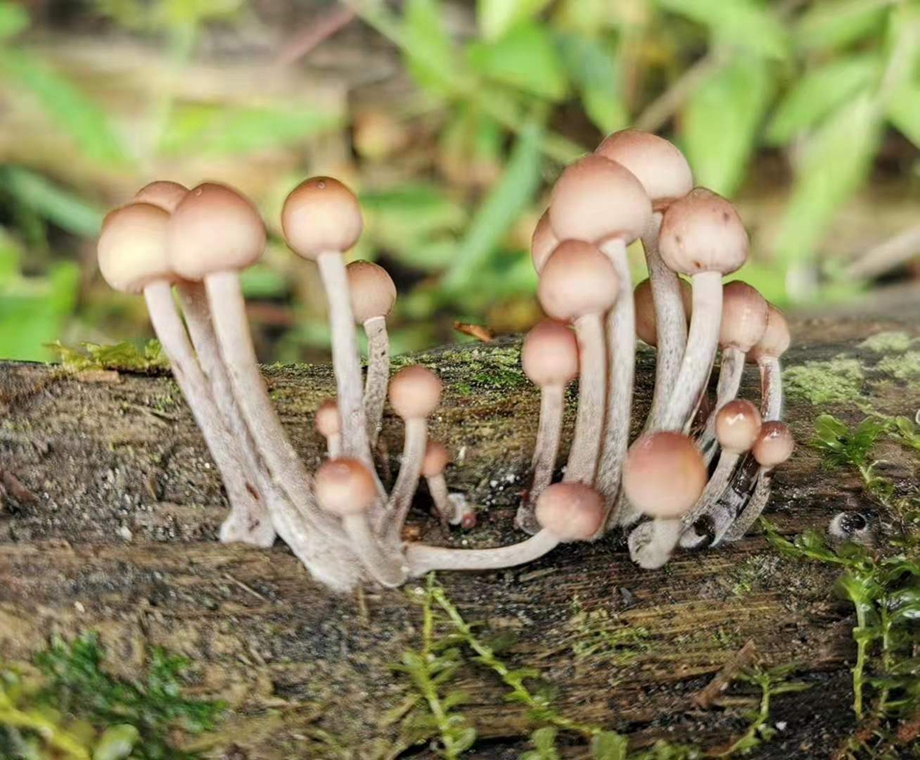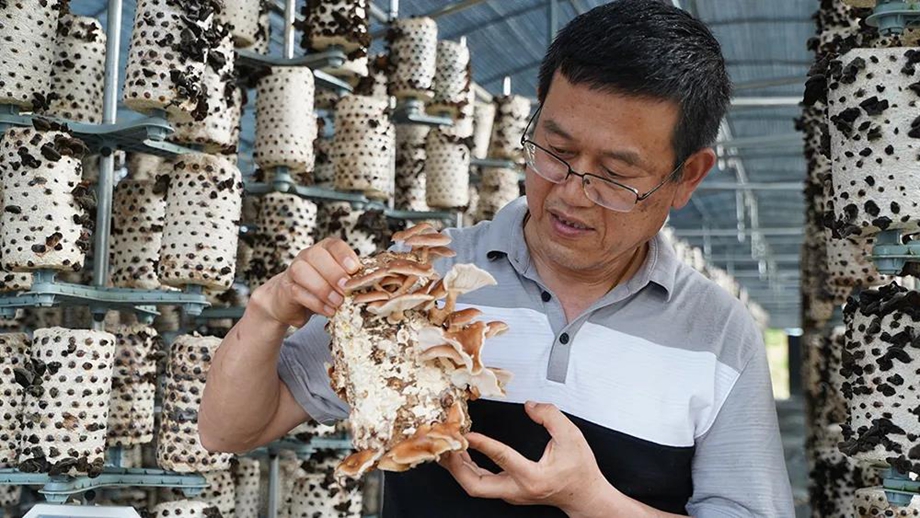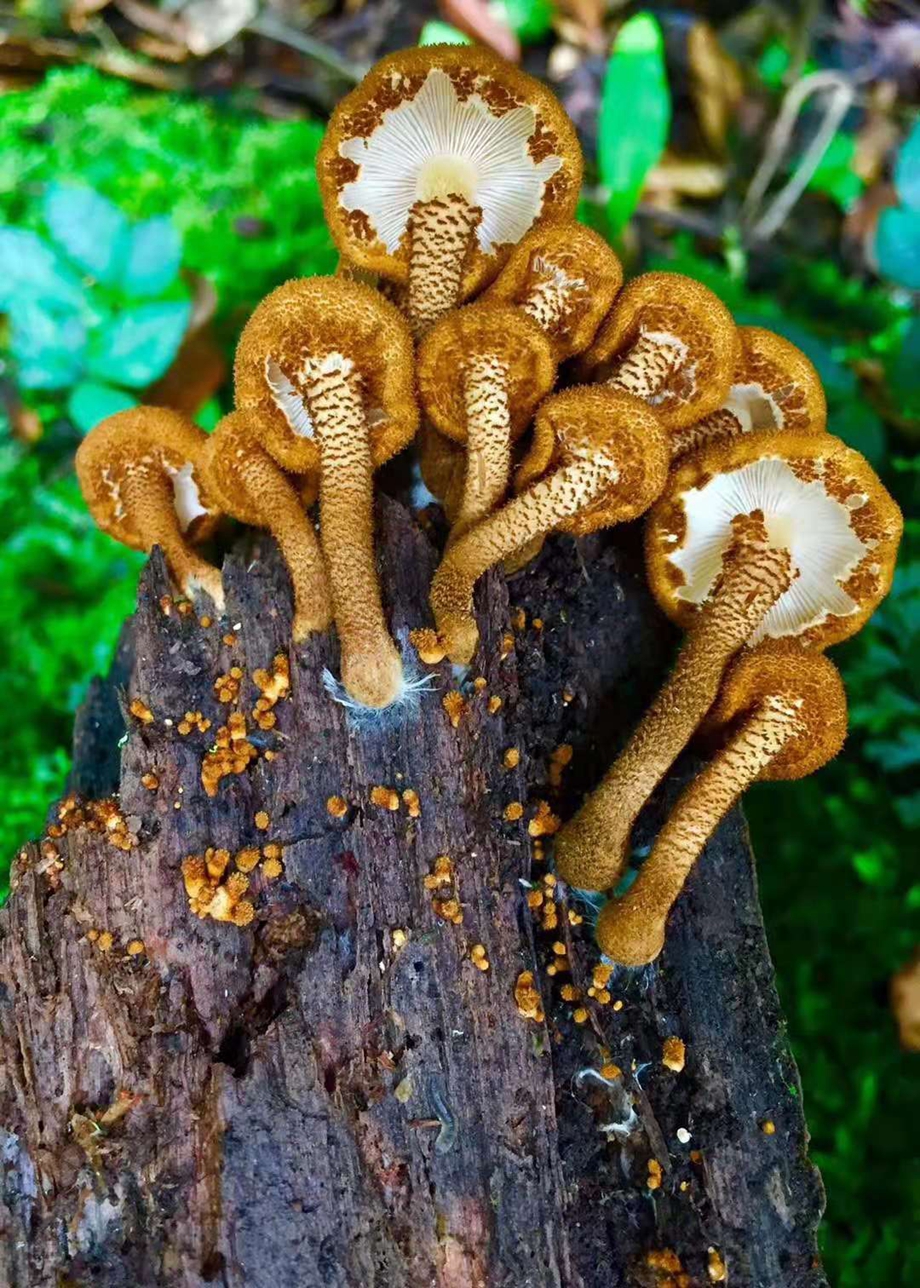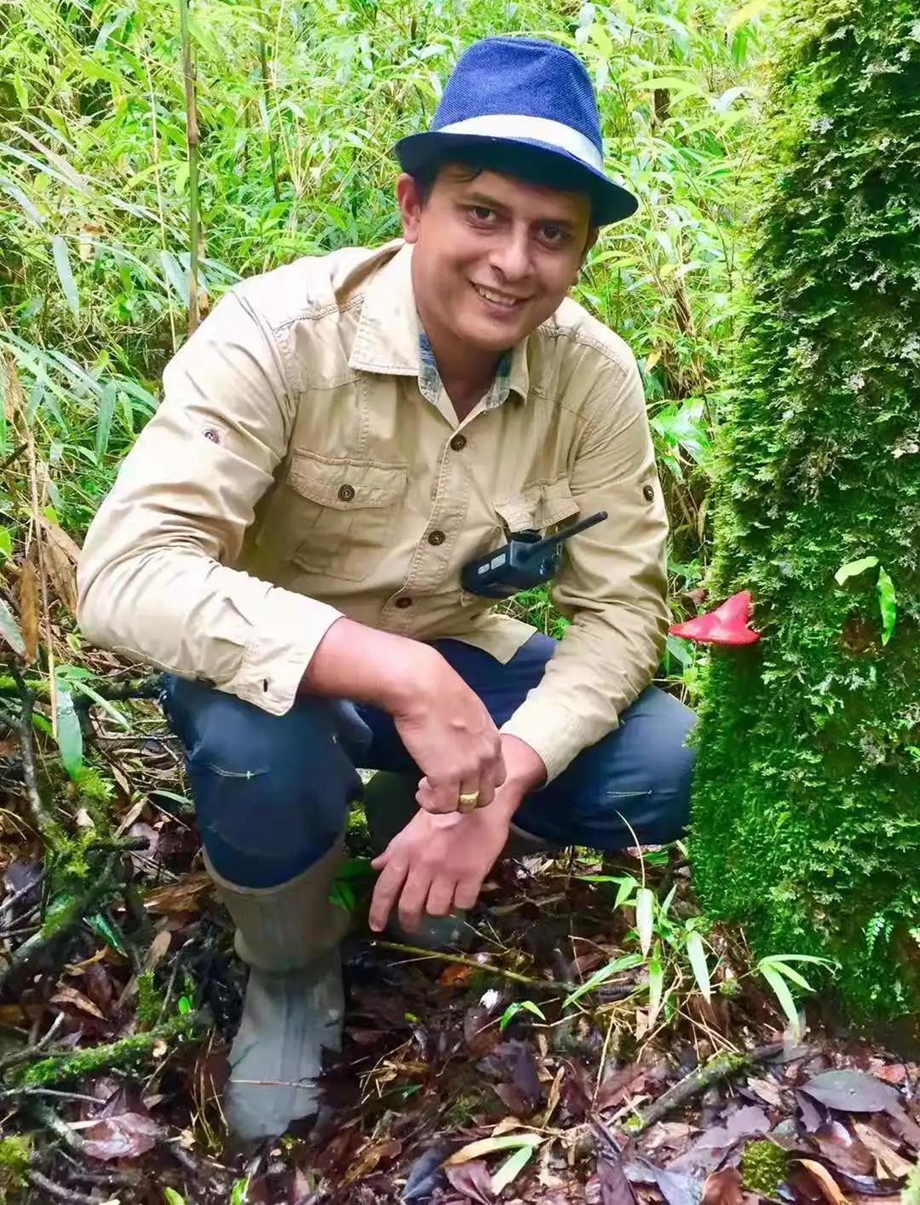Int’l scientists fascinated by mushroom species in Yunnan
A funny tune warning the public of mushroom poisoning went viral in Yunnan recently, whose lyric goes like this: “Mushrooms with a red cap and white stem can be deadly. Once eaten, they may cause you to be poisoned, lying still on a board, resting in a coffin and buried hillside.”

A wild mushroom in Yunnan (Yunnan Daily/File photo)
As the kingdom of wild mushrooms, Yunnan province sees its mountains dotted by colorful wild fungi in the rainy season: lurid bolete, russula virescens, collybia, matsutake, and others. These are edible and tasty ones favored by foodies.
However, even the so-called mushrooms with a red cap and white stem are loved by certain people in Kunming, and they are leading researchers on wild mushrooms.
Xu Jianchu, a scientist with the World Agroforestry Center in Nairobi, Kenya, and also a professor at the Chinese Academy of Sciences' Kunming Institute of Botany, has led a mushroom research team for years, focusing on the wild fungus species in the Lancang-Mekong river basin and beyond.

Xu Jianchu observes a cultivated fungi. (Photo provided to Yunnan Daily)
“Yunnan has its basic tradition on edible fungi, and we’d like to look into the similarities between the Yunnan tradition and those of the mushroom places worldwide,” said Xu.
During the fieldwork tours, Xu and his team have left their footprints in the Asian and African countries of India, Myanmar, Zambia, Kenya and more, collecting around 10,000 samples and investigating the edible mushroom species.

Xu Jianchu poses at a fungi-displaying area. (Photo provided to Yunnan Daily)
Across the globe, Xu observed, Mexico and certain African countries are not so rich in edible or officinal fungi, and the low-altitude areas in the Mekong basin have less edible mushrooms due to havocs wreaked on some species.
On the contrary, Yunnan has a high rate of forest coverage, and its mushroom diversity is richer than those in other regions.
Based on in-depth study and investigations, the Yunnan botanists took the lead in identifying 2,189 edible mushrooms out of the 2,400 fungi worldwide. They also first described 17 of the 100 newly discovered mushroom species.

A wild mushroom in Yunnan (Yunnan Daily/File photo)
So Yunnan is the right destination for either mushroom diners or fungi researchers.
Xu’s researching team also consists of energetic young men from the neighboring countries. Samantha C. Karunarathna, a Sri-Lankan scientist studying fungi, is among them.
“These is no any better place than Yunnan province to research on mushrooms as there are about 900 different edible mushrooms are found only in this province,” said Samantha.
To collect samples of Yunnan mushrooms, Samantha traveled different places in Yunnan such as Baoshan, Dali, Lijiang, Diqing, Pu’er, Chuxiong, and more.

Samantha C. Karunarathna studies in Thailand. (Photo provided to Yunnan Daily)
The Sri Lankan botanist published several guide books and research articles in high impact journals from those collected mushrooms. Samantha is also working on a very comprehensive manuscript on world’s deadliest mushrooms which includes deadly mushrooms in Yunnan.
“Though a large number of edible mushrooms are seen in Sri Lanka forests, people are afraid of eating them,” said Samantha, adding Thai people fancy a few special types of wild mushrooms because of their unique taste.
He noted that the highest edible mushroom diversity in the world is seen in Yunnan, and locals are so fond of wild edible mushrooms than cultivated mushrooms.
Samantha hoped China could cooperate more with the neighboring countries, so as to jointly discover the fungi’s diversity and values and push forward the wild mushroom industry.

Samantha C. Karunarathna goes on fieldwork in Yunnan. (Photo provided to Yunnan Daily)
So, Yunnan folks also expect a taste of Sri-Lankan wild fungi some day.
Reporting by Zu Hongbing and Hu Lixian (Yunnan Daily); Trans-editing by Wang Shixue